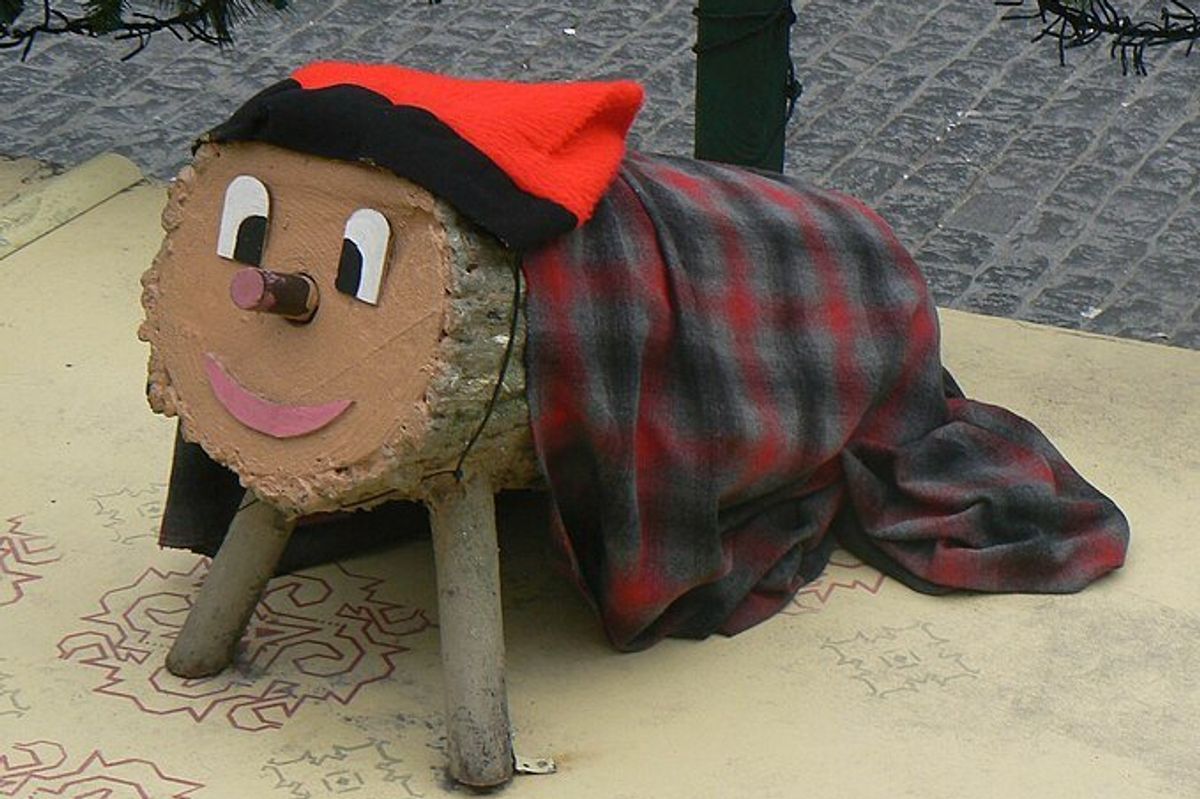
Christmas is celebrated around the world, but it looks a bit different everywhere you go. While there are some fairly universal traditions, such as decorating a tree and giving gifts, there are some traditions specific to different cultures that are both unique and intriguing.
Check these out:
1. ITALY—La Befana: The Good Witch

Women dressed up as La Befana
Eleonora Gianinetto/Wikimedia Commons
In Italy, La Befana is a good witch who flies around on a broomstick on January 5th, the night before Epiphany. Children put their shoes out with a glass of wine and a piece of bread for La Befana, and fills their shoes with candy or small gifts—or chunks of coal, onions or garlic for the naughty ones
2. ICELAND—The Yule Lads
Iceland’s 13 Yule Lads are merry and mischievous troll-like figures, each with a different name and personality. They visit children one at a time during the 13 days leading up to Christmas, leaving gifts and playing tricks, including leaving rotten potatoes in the shoes of kids who don’t behave. According to the Smithsonian, the Yule Lads used to be a lot creepier, but in 1746, the country outlawed scaring children with monstrous tales about the 13 lads. (Would love to know what prompted that law!)
3. ALSO ICELAND—The Yule Cat

As if the Yule Lads weren’t enough, a towering, fearsome cat roams the Icelandic countryside around Christmastime, peeking into homes to spy on children’s presents. In Icelandic tradition, if kids get all of their chores done, they are gifted some new clothes. If the Yule Cat (aka Jólakötturinn) sees that a child wasn’t given clothes (in other words, a child was lazy), the cat proceeds to eats the child’s dinner and then moves on to eating the child. Yes, you read that right. It eats the child. Icelandic folklore doesn’t mess around.
4. PHILIPPINES—The Giant Lantern Festival

In the Philippines, the Giant Lantern Festival is held in San Fernando City (dubbed the Christmas capital of the Philippines) every year the week before Christmas Eve. According to Travel & Leisure, the lantern tradition is rooted in the history of Filipino Catholics building small, colorful lanterns to light up the procession to Christmas Eve mass. The giant parol lanterns for the festival, however, are huge—up to 20 feet tall—and it can take up to 10,000 light bulbs to illuminate them.
5. SPAIN (CATALONIA)—The Tió de Nadal (pooping log)

Some cultures have a yule log. Catalonia, Spain, has the Tió de Nadal—a log with a hat, a blanket, a smiley face and a penchant for pooping out presents. Children feed the smiling log scraps of food at night and it poop out presents on Christmas Day. There’s even a song kids sing to the log, imploring it to not poop out salted herring (too salty), but nougats in instead, all while hitting the log with a stick. According to Catalan tradition, the eating of the scraps and the beating with the stick leads to Tió de Nadal pooping out presents and nougat on Christmas. And apparently, no one questions it.
6. BAVARIA—The Krampus

In Bavaria (which includes Austria, Germany, Switzerland and some of the surrounding area), the Krampus is a centuries-old tradition that has been revived in modern times. The Krampus is a horned, hairy, hellish creature who follows St. Nick on his rounds to punish naughty children by scaring them (or tossing them in a sack and beating them). Many cities hold Krampus festivals each year, where people parade around in Krampus costumes like the one above.
7. VENEZUELA—Roller Skating to Christmas Mass

Most of us don’t association Christmas with roller skating, but that’s not the case for Venezuelans. Christmas is an all-night roller skating party, which includes singing Christmas songs and culminates with everyone rolling their way to Christmas Mass at dawn. Most interestingly, according to a Venezuelan woman’s explanation in America Magazine, it’s not even like Venezuelans are a big roller skating culture the rest of the year—it’s just a Christmas thing.
8. JAPAN—A Finger Lickin’ Good Tradition

Japan doesn’t have a long history with Christmas and thus no long-standing traditions associated with it. What they do have is 50 years of eating KFC for Christmas, thanks to a “Kentucky for Christmas” marketing campaign launched by the first KFC restaurant owner in Nagoya, Japan, in 1970. Somehow, it stuck and is now a beloved tradition for millions of Japanese families.
9. UKRAINE—Spider Webs on Christmas Trees

According to Ukrainian legend, an impoverished widow and her children grew a tree from a pinecone outside of their house, but they were too poor to decorate it for Christmas. The household spiders heard the children’s sobs and spun their webs into decorations overnight. When the children awoke on Christmas morning, they cried out “Mother, mother wake up and see the tree. It is beautiful!” As the day went on and the sun’s rays hit the delicate webs, they transformed into silver and gold and the widow never wanted for anything again. Today, Ukrainians decorate trees with spider webs for good luck and fortune in the new year.
Whatever your family or cultural holiday traditions are, let’s celebrate the differences that make our world so interesting.
